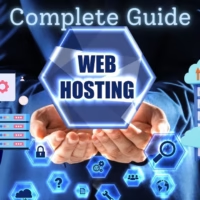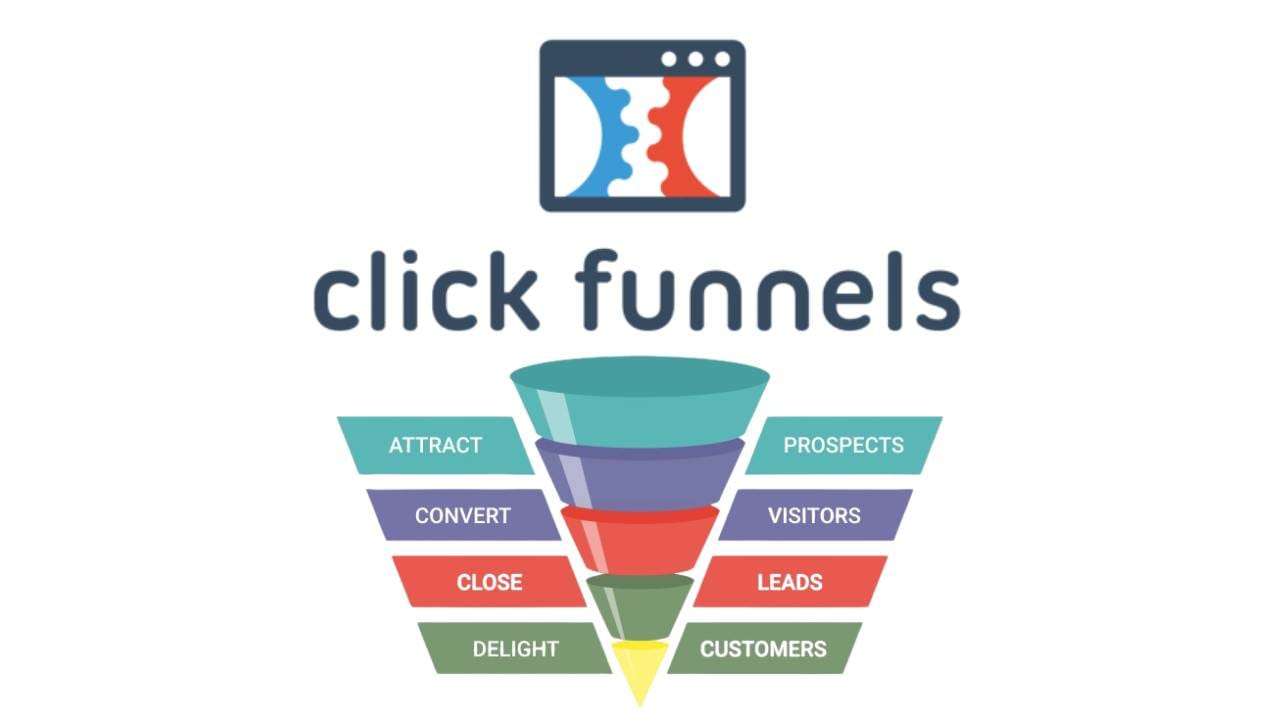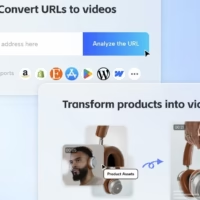Explore top SaaS tools to boost remote team collaboration, streamline workflows, and enhance productivity across time zones.
Table of contents
- Best SaaS Tools for Remote Teams
- Introduction: The Rise of Remote Collaboration
- Key Criteria for Choosing the Best SaaS Tools for Remote Teams
- Core Categories of SaaS Tools for Remote Teams
- Top Communication and Messaging Platforms
- Leading Video Conferencing and Virtual Meeting Solutions
- Best Project and Task Management Tools
- Document Collaboration and File Management Solutions
- Time Tracking and Productivity Software
- Knowledge Management and Internal Wiki Tools
- HR, Payroll, and Employee Engagement Software
- Security and Access Management Solutions
- Integration and Workflow Automation Tools
- Measuring Success: Analytics and Reporting Tools
- Future Trends in SaaS Tools for Remote Collaboration
- Conclusion: Building a Productive and Secure Remote Work Environment
Best SaaS Tools for Remote Teams
Introduction: The Rise of Remote Collaboration
Remote work is no longer a niche concept. Even before global shifts forced companies to adopt flexible work arrangements, distributed teams were steadily gaining traction, driven by technological advancements, talent availability across geographies, and cost-saving measures. Organizations have realized that they can hire the best talent from anywhere and create a diverse workforce capable of operating around the clock.
However, remote work poses unique challenges. Without the immediacy of in-person communication, it can be harder to maintain alignment, clarity, and productivity. To address these obstacles, businesses rely heavily on SaaS tools. These cloud-based solutions offer subscription-based models, automatic updates, and robust support. They empower teams to seamlessly coordinate tasks, share resources, and stay connected regardless of time zones, devices, or office locations.
Key Criteria for Choosing the Best SaaS Tools for Remote Teams
With the market flooded by countless solutions, selecting the right SaaS toolset can feel overwhelming. Consider these key criteria:
Security and Compliance
Your chosen tools must prioritize data protection. Look for end-to-end encryption, role-based access controls, two-factor authentication, and compliance with standards like GDPR, SOC 2, and ISO certifications. Storing sensitive business data in a secure environment is critical, especially when teams access documents and information outside the corporate firewall.
Integration Capabilities
Effective remote collaboration often involves a technology stack rather than a single tool. The ability to integrate with other commonly used applications—like CRM systems, marketing automation platforms, cloud storage solutions, or HR software—is essential. Integrated tools reduce silos and prevent employees from juggling multiple login credentials.
Scalability and Pricing
SaaS solutions usually offer tiered pricing, making it easier for organizations to start small and scale as needed. Consider the long-term cost implications and ensure that the tool will accommodate growth. Look for solutions that offer flexible user licenses, enterprise-level features, and volume discounts.
User Experience and Onboarding
An intuitive interface, comprehensive tutorials, and dedicated customer support can make or break employee adoption. A tool that is difficult to navigate will not become widely used, regardless of its feature list. Look for tools that prioritize user experience, offer training resources, and provide responsive customer service.
Customer Support and Training
Remote teams rely heavily on continuous access to their toolsets. Quality customer support—including troubleshooting guides, FAQs, live chat, and phone support—is crucial. This ensures that any issues are resolved quickly, minimizing downtime and maintaining productivity.

Core Categories of SaaS Tools for Remote Teams
Remote teams rely on a variety of tools to maintain smooth operations. These tools generally fall into distinct categories:
- Communication and Messaging Platforms: Keep conversations flowing and provide channels for quick updates, announcements, and informal chats.
- Video Conferencing and Virtual Meeting Solutions: Enable face-to-face interaction, screen sharing, and virtual whiteboard sessions.
- Project and Task Management Tools: Help teams plan, prioritize, and track work progress, ensuring that everyone is aligned.
- Document Collaboration and File Management Solutions: Centralize document storage and enable simultaneous editing, commenting, and version control.
- Time Tracking and Productivity Software: Measure how time is spent, identify productivity bottlenecks, and improve workload distribution.
- Knowledge Management and Internal Wiki Tools: Capture and share organizational knowledge so that information does not get lost.
- HR, Payroll, and Employee Engagement Software: Manage recruiting, onboarding, performance reviews, and team morale.
- Security and Access Management Solutions: Protect sensitive data and maintain controlled access across remote devices and networks.
- Integration and Workflow Automation Tools: Connect different applications and automate repetitive tasks to create seamless workflows.
- Analytics and Reporting Tools: Translate data into insights, helping leaders make data-driven decisions.
Top Communication and Messaging Platforms
Effective communication is vital for remote teams. These platforms provide secure, real-time messaging channels and integrations with other applications.
Slack
Key Features:
- Organized communication through public channels, private groups, and direct messages.
- Integration with hundreds of tools such as Google Drive, Trello, and GitHub.
- Advanced search, message threading, and pinned messages for easy navigation.
- Robust security measures including SSO, data encryption, and compliance certifications.
Slack’s customizable notifications, file sharing options, and bot integrations help keep distributed teams connected. Employees can quickly share updates, ask questions, and resolve issues without lengthy email chains.
Microsoft Teams
Key Features:
- Unified platform combining chat, video meetings, and file storage.
- Deep integration with Microsoft 365 apps like SharePoint, OneDrive, and Outlook.
- Security and compliance at enterprise scale, including data loss prevention (DLP).
- Customizable channels, tabs, and integration with external SaaS apps.
Microsoft Teams suits companies already using Microsoft 365, providing a seamless experience and minimizing context switching.
Twist
Key Features:
- Conversation threads are organized by topic, reducing communication clutter.
- Focus on asynchronous communication, making it suitable for distributed teams across multiple time zones.
- Integrations with project management and file-sharing tools.
Twist fosters thoughtful, low-noise discussions with its organized, thread-based structure, making it easier to maintain context.
Discord
Key Features:
- Real-time voice and text channels for spontaneous collaboration.
- Screen sharing and low-latency voice chat ideal for development or design teams.
- Moderation tools, role-based permissions, and integrations with popular applications.
Originally popular in gaming communities, Discord has evolved into a flexible communication tool for remote teams who enjoy voice-centric collaboration.
Mattermost
Key Features:
- Open-source, self-hosted solution for maximum data privacy and control.
- Flexible integrations and workflows.
- Channels and threads similar to Slack, but more customizable and extensible.
Mattermost caters to organizations with strict compliance requirements or those seeking open-source alternatives.
Leading Video Conferencing and Virtual Meeting Solutions
Video conferencing allows remote teams to communicate face-to-face, fostering trust, camaraderie, and understanding that’s often missing in text-based communication.
Zoom
Key Features:
- High-definition video and audio quality with minimal latency.
- Breakout rooms, virtual backgrounds, and live transcription.
- Robust meeting controls, waiting rooms, and end-to-end encryption for security.
- Scalability, supporting small calls to large webinars.
Zoom’s reliability and user-friendly interface make it a popular choice for regular team standups, project check-ins, and large virtual events.
Google Meet
Key Features:
- Browser-based video meetings with G Suite integration.
- Simple meeting creation and joining via calendar invites.
- Automated live captions and screen sharing.
- Strong security features and automatic updates.
Google Meet integrates seamlessly with Google Workspace apps like Calendar and Drive, simplifying scheduling and resource sharing.
Microsoft Teams Meetings
Key Features:
- Integrated with Microsoft Teams chat and collaboration features.
- Whiteboard tool, background blur, and meeting recordings.
- Secure end-to-end encryption and compliance-ready environment.
For companies deeply invested in Microsoft’s ecosystem, Teams Meetings provides a cohesive platform for video collaboration.
GoTo Meeting
Key Features:
- Stable, high-quality video conferencing.
- Recording, transcriptions, and built-in meeting diagnostics.
- Integrations with productivity tools like Slack and Salesforce.
GoTo Meeting’s reliability makes it well-suited for client calls, interviews, and more formal meeting environments.
Cisco Webex
Key Features:
- Enterprise-grade security and reliability.
- AI-driven meeting assistance, noise suppression, and speaker tracking.
- Integrations with Microsoft 365, Slack, and Salesforce.
Webex’s features cater to large enterprises seeking a stable, secure video platform that integrates with existing infrastructure.
You Might Like: 10 Free Software Alternatives That Surpass Popular Paid Tools
Best Project and Task Management Tools
Coordinating tasks, deadlines, and responsibilities is critical for distributed teams. These platforms provide clear visibility and accountability.
Trello
Key Features:
- Kanban-style boards for visualizing workflows.
- Customizable lists, cards, and labels.
- Power-Ups for integrations with Slack, Google Drive, and GitHub.
- Easy drag-and-drop functionality and intuitive user interface.
Trello’s simplicity makes it a great starting point for teams new to structured project management.
Asana
Key Features:
- Multiple project views: list, board, timeline, and calendar.
- Custom fields, task dependencies, and workload management.
- Portfolio management for high-level project oversight.
- Integration with Slack, Google Drive, Salesforce, and more.
Asana excels for teams that require more complexity, such as setting task priorities, tracking milestones, and balancing workloads.
Monday.com
Key Features:
- Highly customizable dashboards and workflows.
- Automation recipes to streamline repetitive tasks.
- Integration with CRM, email, and marketing tools.
- Time tracking and reporting features.
Monday.com’s flexible, colorful interface makes it easy to adapt the platform to a variety of team processes.
Jira
Key Features:
- Designed with software development teams in mind.
- Agile workflows (Scrum, Kanban) and robust issue-tracking.
- Integration with developer tools like Bitbucket and GitHub.
- Reporting features including burn-down charts and sprint analytics.
Jira is the go-to solution for engineering teams needing advanced issue and bug tracking, sprint planning, and agile methodologies.
Basecamp
Key Features:
- Simple interface combining messaging, file storage, and task lists.
- Campfire chats, check-in questions, and automatic check-ins.
- Client access for project collaboration outside your organization.
Basecamp is ideal for smaller teams or consultants who need a straightforward, all-in-one solution.
Document Collaboration and File Management Solutions
Centralized document repositories and real-time co-authoring ensure teams can easily find, update, and share critical information.
Google Workspace (Google Docs, Sheets, Slides)
Key Features:
- Real-time co-authoring with automatic saving and version history.
- Seamless integration with Google Drive for file storage.
- Commenting, suggesting, and approval features.
- Wide range of add-ons and third-party integrations.
Google Workspace makes it simple for teams to collaborate on documents simultaneously, track edits, and maintain a single source of truth.
Microsoft 365 (Word, Excel, PowerPoint)
Key Features:
- Familiar interface and offline editing capabilities.
- Robust document formatting, data analysis, and presentation tools.
- Integration with OneDrive, SharePoint, and Teams.
- Enterprise security and compliance options.
For organizations already using Microsoft’s ecosystem, Microsoft 365 provides rich features and strong support for complex documents and spreadsheets.
Dropbox
Key Features:
- Cloud-based file storage with synchronization across devices.
- Dropbox Paper for document collaboration.
- File request and sharing links with password protection and expiration.
- Integrations with Slack, Adobe, Zoom, and other SaaS tools.
Dropbox simplifies file sharing and version control, reducing duplicate work and confusion.
Box
Key Features:
- Enterprise-level security, compliance, and governance controls.
- Integration with Microsoft 365, Google Workspace, Salesforce, and more.
- Box Notes for real-time document collaboration.
- Advanced content management and workflows.
Box caters to industries with stringent compliance requirements while offering a user-friendly collaboration environment.
Notion
Key Features:
- All-in-one workspace combining notes, documents, databases, and wikis.
- Customizable templates for project documentation, meeting notes, and knowledge bases.
- Kanban boards, calendars, and embedded content (videos, files, code snippets).
Notion transcends traditional document collaboration by integrating various content types and organizational methods in one workspace.

Time Tracking and Productivity Software
These tools help remote managers understand how employees spend their time, identify productivity patterns, and ensure fair workload distribution.
Toggl Track
Key Features:
- Simple time tracking via browser extension, mobile, or desktop app.
- Project and client-based categorization for accurate reporting.
- Integrations with Asana, Trello, and other project management tools.
- Detailed reporting and analysis for billing and productivity insights.
Toggl Track’s user-friendly interface encourages consistent tracking habits and supports invoicing or billable hours tracking.
Harvest
Key Features:
- Time tracking with invoicing and expense management capabilities.
- Easy-to-read reports and dashboards for project cost tracking.
- Integration with QuickBooks, Xero, and PayPal for financial workflows.
Harvest is ideal for agencies or freelancers who need to tie tracked hours directly to invoices and expenses.
RescueTime
Key Features:
- Automatic time tracking in the background.
- Detailed productivity reports, identifying time spent on apps and websites.
- Focus sessions and goal setting to improve personal productivity.
RescueTime helps individuals and teams understand where time is spent and how to optimize focus.
Clockify
Key Features:
- Unlimited tracking for free, suitable for budget-conscious teams.
- Visual reports, timesheets, and billable hours calculation.
- Project cost estimates and resource allocation tools.
Clockify’s generous free plan and simple interface make it accessible for small teams.
Timely
Key Features:
- Automatic time tracking powered by AI.
- Memory tracking for precise insight into how work hours are spent.
- Forecasting and workload planning tools.
Timely’s unique memory tracking and forecasting capabilities help teams plan future workloads based on past performance.
Knowledge Management and Internal Wiki Tools
Ensuring remote teams have a centralized knowledge hub prevents information loss and makes onboarding new employees simpler.
Confluence
Key Features:
- Team spaces for department-specific pages and documentation.
- Integrations with Jira and Trello for linking project updates to docs.
- Commenting, version control, and inline feedback.
- Templates for meeting notes, product requirements, and retrospectives.
Confluence is widely used by software teams, but it’s flexible enough to handle any type of organizational knowledge base.
Notion (for Knowledge Bases)
Notion’s flexible pages and databases also make it excellent for storing internal documentation, policies, and guides.
Guru
Key Features:
- Browser extension for on-demand access to knowledge cards.
- Verification workflows to keep content up-to-date.
- Analytics to identify popular or frequently accessed content.
Guru ensures everyone has the latest verified information at their fingertips, reducing repetitive questions.
Slite
Key Features:
- Simple, clean interface focused on note-taking and documentation.
- Real-time collaboration, comments, and shared channels.
- Integration with Slack for quick access to internal docs.
Slite provides a minimalist environment, helping teams focus on creating and maintaining valuable knowledge.
Tettra
Key Features:
- Q&A style documentation to encourage knowledge sharing.
- Integrations with Slack and GitHub for immediate answers to team questions.
- Content verification and approval to maintain accuracy.
Tettra’s emphasis on Q&A formatting encourages team members to ask and answer questions directly in the documentation space.
HR, Payroll, and Employee Engagement Software
Managing a remote workforce includes addressing HR tasks like recruiting, payroll, benefits, and engagement in a secure, efficient way.
Gusto
Key Features:
- Payroll, benefits, and compliance support tailored to remote teams.
- Onboarding checklists and automated tax filings.
- Time-off tracking and employee self-service portals.
Gusto simplifies the HR administration workload, freeing up time for strategic HR initiatives.
Rippling
Key Features:
- Unified platform covering HR, IT, and finance.
- Automated onboarding, laptop provisioning, and account setup.
- Benefits administration, payroll, and compliance management.
Rippling’s unique combination of HR and IT support streamlines employee onboarding and offboarding, ensuring a smooth remote experience.
BambooHR
Key Features:
- HRIS (Human Resources Information System) for centralized employee data.
- Performance management, time-off requests, and employee self-service features.
- Reporting and analytics to guide HR decision-making.
BambooHR supports data-driven HR management, helping remote HR teams stay organized and efficient.
Lattice
Key Features:
- Performance reviews, continuous feedback, and 1:1 meeting templates.
- Engagement surveys and goal tracking to measure team health.
- Clear performance metrics and growth frameworks.
Lattice enables leaders to maintain a pulse on employee performance and engagement, crucial for remote teams lacking in-person cues.
Culture Amp
Key Features:
- Employee engagement surveys, feedback tools, and analytics.
- Actionable insights to improve company culture and retention.
- Customizable survey templates and benchmarking against industry data.
Culture Amp’s analytics help remote leaders understand their workforce’s sentiments, guiding initiatives to improve morale and productivity.
Security and Access Management Solutions
Remote teams need secure solutions to protect sensitive data and manage access rights across various locations and devices.
Okta
Key Features:
- Single Sign-On (SSO) for easy, secure access to multiple applications.
- Multifactor authentication and adaptive policies.
- Lifecycle management for user provisioning and deprovisioning.
Okta reduces password fatigue and improves security compliance, ensuring only authorized team members access company tools.
LastPass
Key Features:
- Secure password management and encrypted vaults.
- Shared folders for team logins.
- MFA and compliance features.
LastPass simplifies credential sharing within teams, reducing the risk of unsecured password storage.
1Password
Key Features:
- Secure vaults with AES-256 encryption.
- Easy password sharing and management within teams.
- Watchtower alerts for leaked or weak passwords.
1Password’s user-friendly interface encourages good password hygiene across the organization.
Dashlane
Key Features:
- Enterprise password management with SSO and directory integration.
- Dark web monitoring for compromised credentials.
- Secure notes and payment method storage.
Dashlane adds an extra layer of security by proactively monitoring the dark web for compromised information.
Duo Security
Key Features:
- Multifactor authentication (MFA) to secure logins.
- Device health checks and adaptive access policies.
- Strong integration with major SaaS platforms.
Duo Security ensures that remote employees use secure devices and follow best practices before accessing company data.
Integration and Workflow Automation Tools
Seamless workflows reduce manual, repetitive tasks, freeing up employees to focus on high-value activities.
Zapier
Key Features:
- Connects thousands of apps with triggers and actions.
- Automates tasks such as updating CRM records, sending email alerts, or creating tasks in project management tools.
- No coding required.
Zapier’s extensive library of integrations makes it a favorite for building efficient workflows without developer intervention.
Make (formerly Integromat)
Key Features:
- Advanced scenarios and data transformations.
- Visual editor for complex workflows.
- Integration with over 1,000 apps.
Make caters to those needing more complex, conditional workflows, offering granular control over data routing.
Workato
Key Features:
- Enterprise-grade integrations and automation.
- Pre-built recipes for common workflows.
- Intelligent automation with ML and AI features.
Workato focuses on large-scale, complex integrations across multiple enterprise systems.
IFTTT
Key Features:
- Simple “If This, Then That” recipes for personal productivity.
- Integrations with smart home devices, social media, and work apps.
- Lightweight, user-friendly automation.
IFTTT is great for simple automations, although it is often more consumer-oriented than enterprise-focused.
Measuring Success: Analytics and Reporting Tools
Data-driven decision-making is especially important for remote teams, where visibility may be limited. Analytics tools turn raw data into actionable insights.
Tableau
Key Features:
- Drag-and-drop data visualization.
- Connects to multiple data sources, including spreadsheets, databases, and cloud services.
- Real-time dashboards and automated reporting.
Tableau’s rich visualizations help remote leaders track project progress, sales performance, and operational metrics in an accessible format.
Power BI
Key Features:
- Integration with Microsoft products and Azure services.
- Interactive dashboards, custom visuals, and AI-driven insights.
- Data modeling and collaboration capabilities.
For organizations using Microsoft 365 and Azure, Power BI provides a seamless data analysis environment.
Looker
Key Features:
- SQL-based modeling layer for clean, consistent data definitions.
- Customizable dashboards and embedded analytics.
- Integration with Google Cloud and other data warehouses.
Looker’s modeling approach enables consistent metrics and reduces data chaos, ensuring everyone refers to a single source of truth.
Future Trends in SaaS Tools for Remote Collaboration
As remote work solidifies its place in the corporate landscape, SaaS solutions will continue to evolve:
- AI and Machine Learning: Expect more intelligent suggestions, automated workflows, and predictive analytics. For example, project management tools may predict potential bottlenecks, while chatbots handle routine inquiries.
- Metaverse and VR Collaboration: Virtual workspaces might shift into VR environments, offering immersive meeting and brainstorming sessions.
- Privacy and Compliance Enhancements: With remote teams spanning multiple regions, tools will focus more on regional compliance requirements, data residency, and privacy controls.
- Unified Work Hubs: Instead of juggling many disconnected apps, look for platforms that unify communication, task management, and analytics into a single interface.
- Greater Emphasis on Well-Being: Employee engagement tools will incorporate wellness checks, mood tracking, and burnout prevention resources.
Conclusion: Building a Productive and Secure Remote Work Environment
Selecting the right SaaS tools for remote teams can improve communication, simplify project management, ensure secure file sharing, and keep everyone connected, engaged, and productive. The array of solutions—from Slack for messaging and Zoom for video calls to Asana for project management and Google Workspace for documentation—enables organizations to build robust, dynamic, and scalable remote operations.
Start by identifying your team’s most pressing needs. Do you require better real-time communication, more transparent project tracking, or top-notch security protocols? Once you know your requirements, use the criteria discussed—security, integrations, scalability, user experience, and support—to narrow down the options. With the proper tools in place, remote collaboration becomes seamless, empowering teams to excel regardless of where they work.
As remote work continues to evolve, staying current with the latest SaaS solutions and trends ensures that your organization remains agile, innovative, and competitive. By embracing the best SaaS tools for remote teams, you foster a work environment that’s not only more efficient but also more inclusive, resilient, and future-ready.













